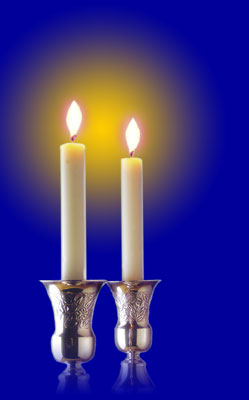 (see the late great Rabbi Shlomo Yosef Zevin's 'The Festivals in Halacha' for more information on Tu Bishvat. It is gratefully acknowledged for its use in preparing this post.)
(see the late great Rabbi Shlomo Yosef Zevin's 'The Festivals in Halacha' for more information on Tu Bishvat. It is gratefully acknowledged for its use in preparing this post.)
This Monday night and Tuesday (21/22 Jan 08) is
Tu Bishvat (aka Tu B'shvat). Tu Bishvat means 'the fifteenth day of
Shevat'. The Hebrew letters
'tet' and
'vav' have the numerical value of 9 and 6 respectively and Shevat is one of the months of the Jewish calendar.
Tu Bishvat is mentioned in the
Mishna (
Rosh Hashana 1:1) as the new year for trees. According to the Beit Hillel (house of the sage
Hillel), the new year for trees is on 15 Shevat whilst according to Beit Shammai (house of his great contemporary
Shammai), the new year for trees is on 1 Shevat. The
Gemara (
Rosh Hashana 14b) decides in favour of Beit Hillel as it usually does in disputes between the two houses.
Why is there a new year for trees and why is there this difference of opinion as to when it occurs? (this is not to do with when it is most convenient for school kids to be able to plant trees or flowers to celebrate Tu Bishvat - so I am told!!)
The signifcance of the new year for trees lies primarily in various laws in the Torah that apply to trees. It is similar to the need for a financial new year for laws for laws which apply to appropriate money laws.
An example of the law that applies to trees is called 'orlah'. Orlah is a mitzva which prohibits using the produce of a tree in its first 3 years. The first year for this purpose ends on the Tu Bishvat following the planting of the tree.
The disagreement as to when the new year for trees occurs is based on disagreements as to when most of the rainy season has passed and when trees will then grow faster again (see the commentaries of
Rashi and
Tosafot on the Mishna that we cited). The Sages wished to get this time as right as they could.
Tu Bishvat has particular application in a Shemita year (see
these posts for an explanation of Shemita) as it helps to distinguish between fruit which is part of the Shemita year and that which is not.
Since most of the laws relating to Tu Bishvat concern
mitzvot hateluyot ba'aretz (Torah laws which apply only in the Land of Israel), it is a day which has more application in Israel than in the Diaspora. Nonetheless, it is a day which reminds us that the Torah directs us as to how to care for trees and by extension the rest of the environment and should make us pause to consider these ideas (get your recycling ready now!)
Some Sepharadi Jews, basing themselves on mystical sources, say special prayers, sing special songs and make a special feast for Tu Bishvat at which they eat as many different kinds of fruit as they can.
Ashkenazim, according to the
Magen Avraham, (
Shulchan Aruch,
Orach Chayim 131:16) also eat many kinds of fruit - some people go for 15 since Tu Bishvat is on the 15th day of the month - but without the same kind of celebrations that are customary in Sepharadi communites, although the Ashkenazim cheer themselves by reciting
Tachanun neither on Tu Bishvat nor at
Mincha of the preceeding aftenoon.! (see Shulchan Aruch, Orach Chayim, 131:6)
Amongst Chasidim, many have the custom to pray on Tu Bishvat that they should get a beautiful etrog at Succot.
Whatever you do on Tu Bishvat, enjoy some fruit (if you buy Israeli fruit, make sure it is not Shemita produce - see
here for info), consider the lessons of the day and look forward to the spring if you prefer it to winter!





